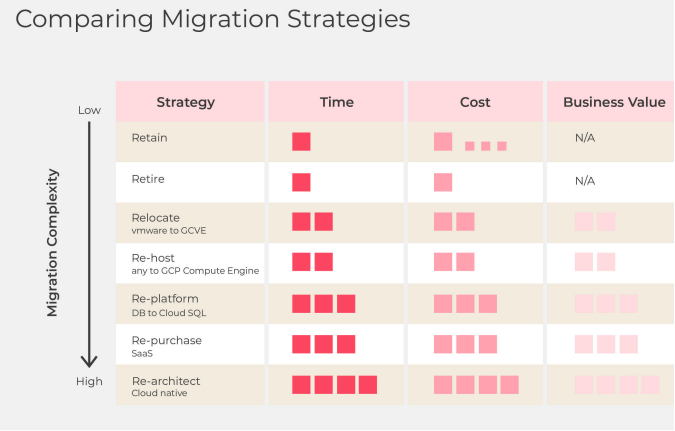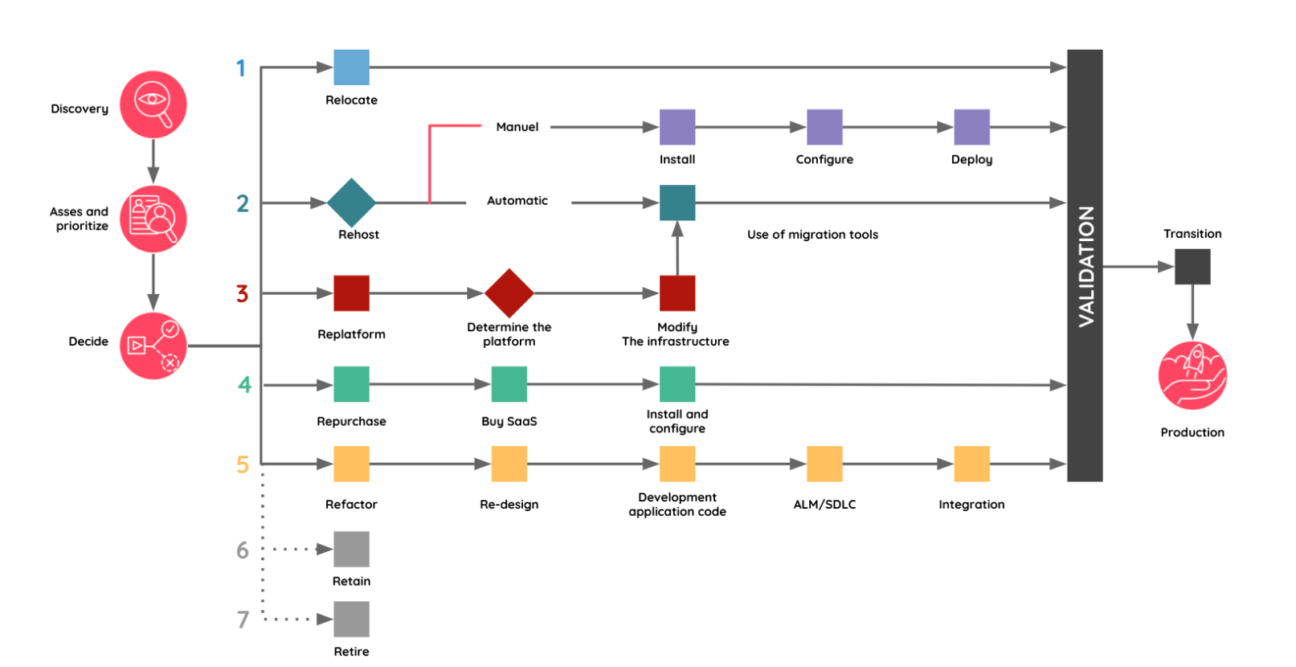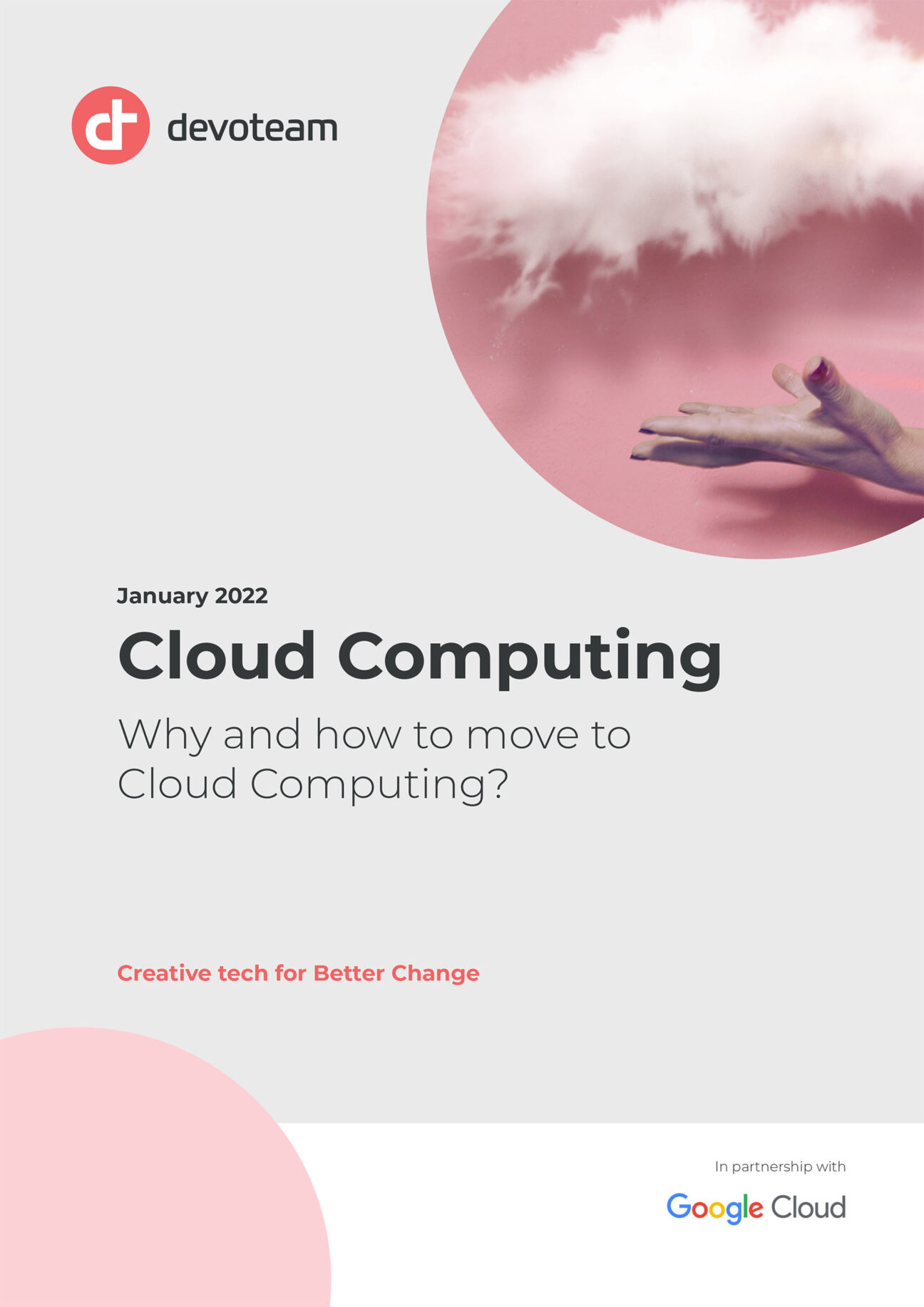In this chapter, you will read:
- Domain analysis: assessment
- Define your migration strategy and plan its execution
- Setting up your Cloud foundations
- Migrate
Once all these concepts have been integrated, it is time to take action! For this, standard methods exist. The market is now mature and has a certain amount of hindsight and a fairly wide range of tools that enable all these processes to be industrialised.
Domain analysis: assessment
The first step to a smooth migration is to have a good grasp of your existing infrastructure. Tools can speed up this step: thanks to tools such as Stratozone, it is now quick and easy to have a detailed inventory of your infrastructure, as well as metrics on the actual use of servers and the flows between them.
This provides a mapping of applications and servers that will be useful in defining the migration plan and dependencies.
But tools alone cannot do everything. It is important to supplement this initial vision with in-depth discussions with application managers to understand application constraints, business criticality, expected availability levels and future developments.
Define your migration strategy and plan its execution
Given the multiple possibilities available to companies in terms of technological choices, and depending on their context and level of maturity, it is then necessary to define a strategy tailored to each application.
Strategies for migration to the Public Cloud

Source: Devoteam G Cloud
The analysis of the data collected makes it possible to decide on the migration strategy, generally classified according to the 7Rs rule:
- Retire: the application is no longer in use and must be retired. • Retain: a technical, business or financial constraint prevents the application from being migrated to the Cloud; the application must remain on premise.
- Relocate: the virtualised application should be moved to a similar cloud environment (e.g. VMWare On-Premise to VMWare in the Cloud).
- Rehost: the application must be migrated as is. No changes are made to the application (same OS, same database, same middleware, …), only the underlying infrastructure changes.
- Repurchase: the application must be replaced by an application that provides an equivalent service in SaaS mode.
- Replatform: the application must be migrated to a new platform, with minor changes to the code or functionality.
- Refactor: the application needs to be refactored to optimise the existing code for compatibility with native functionality and managed cloud services.
At Devoteam G Cloud, the migration strategy adapted to each application is identified from 6 categories and 18 criteria:
- Functional (criticality of the application, etc.)
- Application (type of architecture, number of integrations, etc.) • Database (type, version, etc.)
- Infrastructure (virtual, physical, x86 or not, etc.) • Volume (performance, etc.)
- Security (data classification, etc.)
The migration strategy will determine the steps to take:
Migration paths according to the chosen strategy

Source : Devoteam G Cloud
Setting up your cloud foundations
Building a solid foundation is essential to deploying a reliable and secure Cloud environment. At Devoteam G Cloud, we believe that the following areas should be covered:
- ID and access governance and management
- Network
- Security
- Log supervision and management
- Shared services
- Automation
- Invoicing
We have developed a standard code that we use as a basis for all our projects, adapted to the needs of each client and which allows us to quickly create foundations to:
- Industrialise deployment
- Facilitate maintenance
- Promote better governance
- Increase collaboration
Migrate
Now, it’s up to you!
